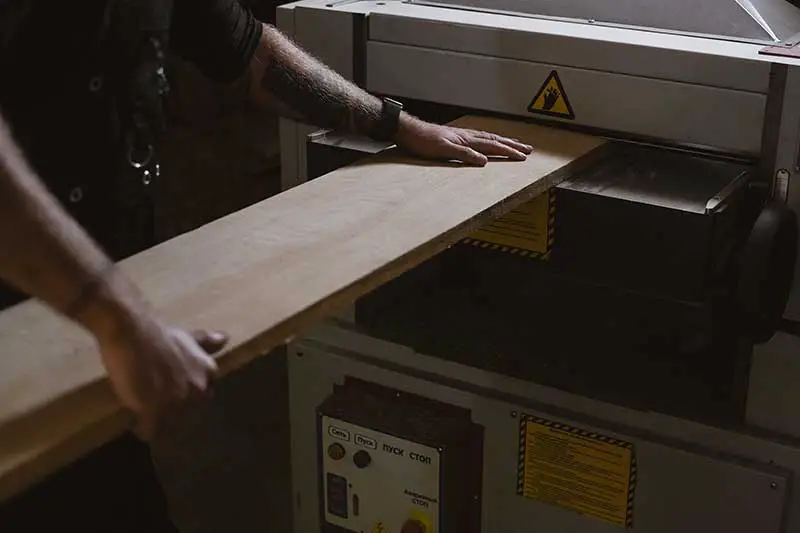Planer tools are essential in woodworking for providing a level surface, consistent thickness, and a smooth finish. They offer various benefits, including efficiency, precision, versatility, and cost-effectiveness. This article will discuss why you should use a planer, the benefits of employing a planer tool, different types of planer tools, and their applications.

Why Use a Planer
Planers are necessary for woodworking projects because they provide a level surface, consistent thickness, and a smooth finish. Wood often comes with irregularities, roughness, and uneven thickness that may affect the final outcome of your project. A planer helps in rectifying these issues and offers a professional touch to your work.
Improving Aesthetic Appeal
Using a planer can significantly enhance the aesthetic appeal of your woodworking projects. It helps remove surface imperfections, giving the wood a polished appearance. This, in turn, improves the overall look and feel of the finished product.
Increasing Structural Integrity
A planer ensures that all the components of a woodworking project have a consistent thickness, which is vital for maintaining structural integrity. This consistency allows for better weight distribution and strength across the entire structure.
Benefits of Using a Planer Tool
- Efficiency: Planers help in quickly and efficiently shaping, smoothing, and leveling wood surfaces. They save time and effort compared to manual methods like sanding.
- Precision: Using a planer ensures consistent thickness across the entire workpiece, contributing to better stability and structural integrity in the final product.
- Versatility: Planers are suitable for various woodworking projects, including furniture making, cabinetry, and carpentry.
- Cost-effective: Planers reduce the need for purchasing pre-dimensioned lumber, allowing you to save money by buying rough-cut lumber and dimensioning it yourself.
“A planer tool is indispensable in woodworking for ensuring a level surface, consistent thickness, and a smooth finish.” – Woodworking Expert
Different Types of Planer Tools
There are several types of planer tools available, each with its unique features and advantages:
Hand Planers
Hand planers are manual tools that offer high control over the planing process but require more effort and time compared to powered planers. They are ideal for small projects and minor adjustments. Hand planers come in various sizes and styles, including block planes, smoothing planes, and jointer planes, each designed for specific tasks.
Portable Electric Planers
These power tools are handheld and suitable for various tasks, including trimming doors, leveling floor joists, and beveling edges. They are faster and more efficient than hand planers. Portable electric planers have adjustable depth settings, allowing you to control the amount of material removed with each pass.
Stationary Planers
Also known as benchtop planers, these powerful tools are ideal for larger projects and provide high precision and accuracy. They are suitable for both professionals and hobbyists. Stationary planers typically have a more substantial cutting capacity than portable models and often include features such as adjustable feed rates and built-in dust collection systems.
Planer Thicknessers
These combination machines offer both planing and thicknessing functions, making them efficient for woodworking projects that require consistent thickness. Planer thicknessers are versatile and save space in the workshop by combining two essential tools into one machine. They often have adjustable feed rates and integrated dust collection systems for added convenience.
| Type | Best For | Advantages |
|---|---|---|
| Hand planers | Small projects, minor adjustments | High control, affordable |
| Electric planers | Various tasks, trimming, leveling | Faster, efficient, portable |
| Stationary planers | Larger projects, professional use | High precision, versatile, powerful |
| Planer thicknessers | Consistent thickness, combined tasks | Efficient, dual-function (planing, thicknessing) |
Applications of Planer Tools
Planers have numerous applications in woodworking, including:
Furniture Making
Planers are essential for creating smooth, even surfaces and consistent thickness in furniture components like tabletops, chair legs, and cabinet doors. This ensures a professional finish and increases the durability of the final product.
Cabinetry
Planers help create level surfaces and consistent thickness for cabinet components, ensuring accurate and precise assembly. This contributes to the overall appearance and functionality of the cabinetry.
Carpentry
Planers are used for leveling floor joists, trimming doors, and resizing framing lumber in various carpentry tasks. They help maintain structural integrity and provide a polished appearance to wood surfaces.
DIY Projects
Planers are useful for home improvement and DIY woodworking projects, ensuring a professional appearance in the final product. They can be used for tasks such as building shelves, creating custom moldings, and refinishing furniture.
In conclusion, planer tools are indispensable for woodworking projects, as they provide efficiency, precision, and versatility. Understanding the benefits and types of planer tools will help you choose the right tool for your needs and achieve the best results in your woodworking endeavors.
Key Takeaways
- Planers are essential for woodworking projects to provide a level surface, consistent thickness, and a smooth finish.
- Benefits of using a planer tool include efficiency, precision, versatility, and cost-effectiveness.
- Different types of planer tools include hand planers, electric planers, stationary planers, and planer thicknessers.
- Planer tools have various applications, including furniture making, cabinetry, carpentry, and DIY projects.
